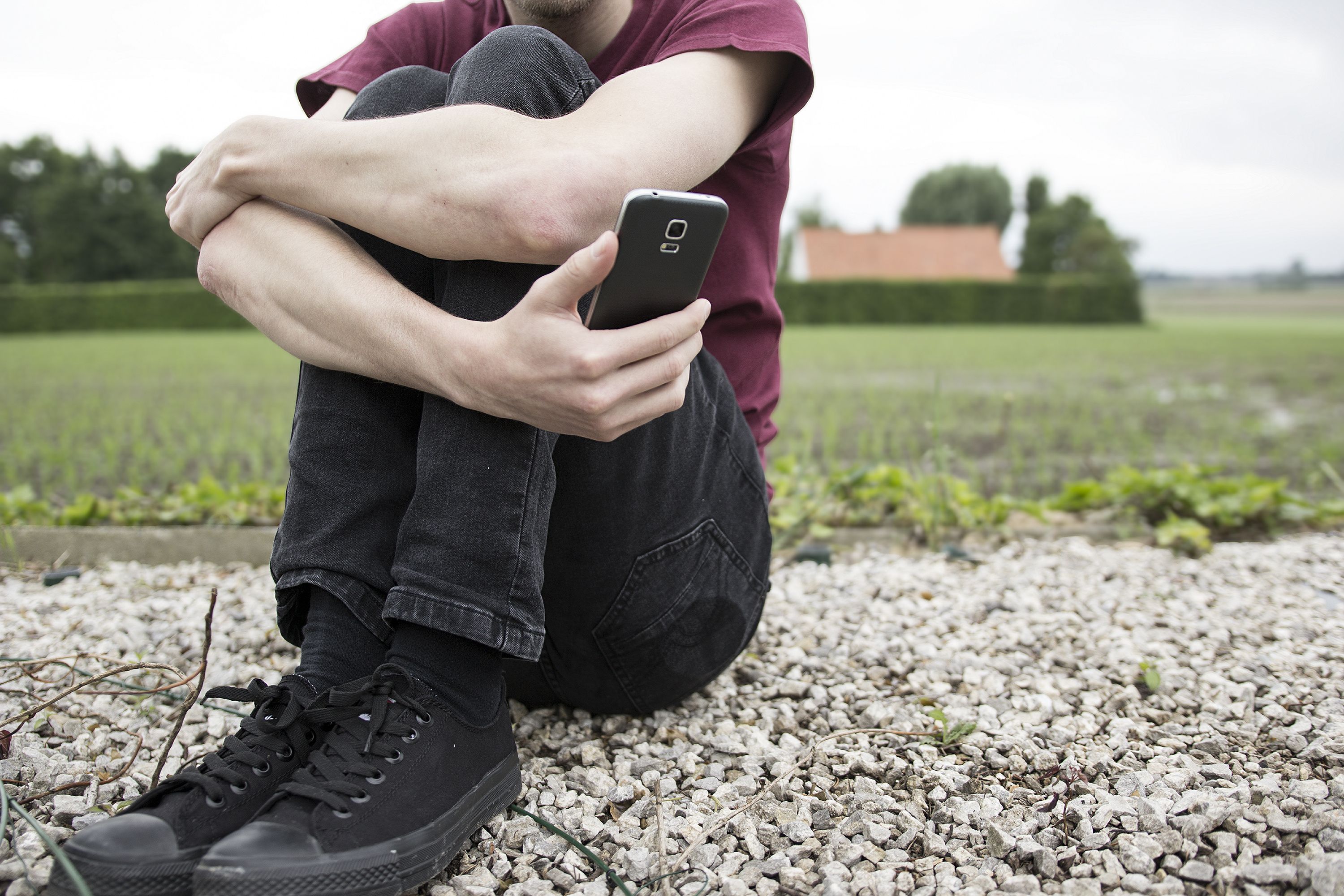Article
A Look at the 988 Soft Launch
Author(s):
A practical guide to understanding the new behavioral health emergency number and creating effective messaging for patients, families, and colleagues.
Thomas_AdobeStock

CRISIS CONNECTIONS
On July 16, 2022, the United States will “soft launch” a new emergency number for behavioral health emergencies. The 988 number will provide 24/7 access to crisis counseling for anyone experiencing a mental health or substance use crisis via phone, text, or chat. The creation of 988 is a key advance in developing a behavioral health crisis system comparable to the police, fire, and ambulance systems we take for granted for other types of emergencies.
The purpose of this column is to provide practical guidance for Psychiatric Times™ readers about the 988 soft launch. What does it mean? What doesn’t it mean? What should you tell your patients and their families? What should you tell your colleagues and staff? What is the best way to take advantage of this new opportunity and contribute to the successful development of crisis systems in your community?
Why a Soft Launch?
A soft launch is undertaken when an organization wants to roll out a new service gradually over time. In the case of 988, its creators want to ensure the infrastructure and staffing are in place to handle the call volume, which is expected to increase as the public becomes aware of this new resource. They also need the ability to continue work on various technical details and to address new issues as they arise. For these reasons, the messaging and advertising about 988 thus far has been somewhat limited, with more aggressive marketing planned as the system matures.
988 and the National Suicide Prevention Lifeline
The new 988 number connects to the existing National Suicide Prevention Lifeline (NSPL).1 Some background knowledge about NSPL helps in understanding the 988 system. The NSPL began in 2005 as a suicide hotline with the goal of bringing easy access to a standard level of evidenced-based suicide crisis counseling via a nationwide toll-free number (1-800-273-TALK). The Substance Abuse and Mental Health Services Administration (SAMHSA) has supported this network with small amounts of funding, certification standards, and technical assistance via its partner Vibrant Emotional Health. NSPL call centers range from small volunteer-based organizations focused on suicide prevention to comprehensive crisis lines that include NSPL services as part of a larger service array.
Over the past 15 years, the NSPL has grown to a network of about 200 call centers across the United States, including a Veterans Crisis Line, live Spanish language services, translation services for more than 250 other languages, and capability for chat and text. (The NSPL/988 text function is unrelated to the 741741 Crisis Text Line.)
Geolocation and How Calls are Routed
When someone calls the NSPL (or 988 after July 16), the call is routed to the nearest call center based on the area code and exchange of the caller’s phone. If that call center is too busy, the system will transfer it to a backup call center. Similarly, if someone contacts 988 via text or chat, the contact is routed to the nearest center with chat or text capability or prompted to switch to voice if the wait is too long.
The number’s area code-based routing means that a caller in Phoenix using a cell phone with a New York area code will be connected to a call center in New York. This is an issue because the New York center may be unable to access local resources in Phoenix such as mobile crisis. Vibrant has advocated for shifting to a geolocation-based call routing system like 911, but some have raised concerns about anonymity and privacy. (Callers to 988 do not have to give their name and address, and 988 centers do not sell user data.) The Federal Communications Commission (FCC) has recommended the creation of an advisory committee to address these issues.
What Happens on the Call? How is it Different From Calling 911?
A trained crisis counselor will listen and collect information, provide support, and help connect the caller to resources. Most behavioral health crisis calls can be resolved in this manner. In contrast, the 911 system generally does not attempt to provide counseling and crisis resolution over the phone. Rather, 911 is designed to quickly triage calls so that emergency personnel (police, fire, EMS) can be dispatched to the caller’s location as soon as possible.
The Role of the Local Crisis System
If the crisis cannot be resolved on the phone, the call center collaborates with the caller to get them the help they need. Activating 911 is a last resort when there is imminent risk to someone’s life, and this occurs with about 2% of NSPL calls. Less intrusive options exist,2 but their availability varies widely across communities. Some crisis lines can dispatch mobile crisis, activate co-responder teams that pair law enforcement with clinicians, and/or facilitate referral to specialized crisis facilities. In addition, many crisis lines are experimenting with co-location and other collaborative protocols with their local 911 system to better coordinate services and route calls.
What is the Status of the 988 System as of July 2022? How Does it Vary Across States?
In 2021, the NSPL received roughly 3.6 million contacts via phone, chat, and text. This volume is projected to double over the first year,3 and analyses of 911 and other crisis call systems suggest that the true need could be 10 times the current baseline volume.
States have received federal funding to build up their networks of NSPL-certified centers so that there is increased capacity for call, chat, and text response to 988 contacts. Many cell carriers began routing 988 calls to NSPL over a year ago. Chat and text messaging capability has improved significantly, with current response rates at 76%—up from 26% just 4 months ago.
The initial focus of 988 implementation is ensuring that most contacts are answered locally in the state where they initiated. However, call center capacity still varies from state to state, and each state has approached 988 planning somewhat differently. Some states have a single statewide call center while others have multiple. Some states are messaging that 988 is for all types of behavioral health crises; others are encouraging an initial focus on just suicide prevention. Even within states, there can be regional variation in call center capacity, integration with 911, and the availability of local crisis services.
The take-home message is: What happens when you call 988 can be highly dependent on where you live; thus, practical advice about using 988 will need to be tailored to local communities.
Developing a Local Messaging Strategy
Review existing national and state informational and marketing materials: SAMHSA,4 Vibrant,5 and the National Action Alliance for Suicide Prevention6 have many resources available online. Most national marketing is general about what 988 is intended to be and does not provide concrete messaging instructions for local communities. Your state may have more specific guidance.
Identify the 988 call center(s) that serve(s) your community: Some states have local and regional centers while others have a single statewide center. Find out if these centers have chat/text capability and what other services and linkages they provide. Obtain any marketing materials so you can be consistent with their communications as well.
Identify the crisis service array in your community and whether it is currently connected to 988 or 911 for dispatch or referral: Check out mobile crisis teams and crisis facilities to learn what they do and how/if they are linked with 988. Find out if your local 911, EMS, and law enforcement have been involved in 988 planning and how they are linked.
Work with others in your community to develop a consistent communication strategy: Coordinate with your local community mental health center, county behavioral health department, National Alliance on Mental Health (NAMI) chapter, professional society, health system with a psych ER, etc. It is helpful if everyone has a similar message. If no one is working on messaging, it is fine to develop an initial draft and circulate it to others.
Developing Content for Your Local Messaging
You might want to tailor your messaging to different groups—patients and families, staff and colleagues, and other stakeholders outside of the behavioral health system. Think about what questions these groups might have and strive for simple, understandable answers. Some issues to consider:
How important is it for callers to reach your local center? In communities with a robust crisis system, callers will have to connect to the local 988 center to access these resources. You may want to advise those using cell phones with non-local area codes to use the center’s local number. Some communities have an option to access 988 via 911 (eg, “press 1 for mental health”), which could be another way to ensure connection to the local 988 call center.
When should you recommend 988 instead of the local crisis line number? When connection to local resources is less important, 988 is a great option because it is easy to advertise and easy to remember. You will always get a consistent response from a trained crisis counselor. You can access help via text and chat even if your local call center does not yet have that capability. Veterans can easily access the Veterans Crisis Line via 988.
What kinds of emergencies should 988 be used for? Although it began as a suicide hotline, the new 988 system can be used for any kind of mental health or substance use crisis. A crisis is defined by the individual asking for help, meaning there is no threshold for how “bad” a crisis must be before calling. The goal is to make it easier to ask for help sooner and prevent the situation from escalating into a more severe crisis.
When should you call 911 instead of 988? You should still use 911 when there is a life-threatening medical emergency (eg, overdose) or immediate risk of harm to someone. The 988 number is best when there is time to safely collect information and problem-solve.
Does 988 mean that crisis response in my community is now better? The 988 number improves the availability and quality of crisis counseling via phone, text, and chat, but it does not create additional services. However, the planning process has prompted communities to improve coordination of existing resources, and many are working to develop new services. It is important to manage expectations so that callers do not expect new crisis services that do not exist yet.
How Can You and Your Organization Contribute to the Success of the Soft Launch?
Having a clear messaging plan for patients, their families, and your colleagues is already helpful. Coordinating with others in your community and your state is even better.
Our final recommendation is to remember that a soft launch is an intentional quality improvement process, and your organization has an opportunity to be part of the solution. It took decades to perfect 911, and we expect 988 will have glitches as it gets off the ground. You can help by gathering and reporting data on staff and patient experiences with 988 (both good and bad) to those overseeing 988 in your community. Even better, identify how representatives of your “constituency” (professional organizations, county systems, etc) can participate in state or local workgroups dedicated to continuous improvement and growth of not only 988 but the crisis system as a whole.
Concluding Thoughts
The 988 soft launch is just the beginning. SAMHSA’s long-term vision is that every community will have access to a robust and well-coordinated crisis system, where police are not the default first-responders for behavioral health emergencies, that ensures everyone has someone to call (988), someone to respond (mobile crisis), and somewhere to go (crisis facilities). States have received funding to plan and build these next-level crisis services, with additional funding legislation in development. We will be looking forward to further progress by next year and in the decades to come.
To learn more about what an ideal crisis system looks like and how to get there, read our previous column in Psychiatric Times™ and check out the Roadmap to the Ideal Crisis System.
Dr Balfour is chief clinical quality officer at Connections Health Solutions, a leading innovator in behavioral health crisis care that emphasizes treatment in the least restrictive setting with improved quality and reduced hospital admissions. She is also an associate professor of psychiatry at the University of Arizona. She is a coauthor of the report, Roadmap to the Ideal Crisis System: Essential Elements, Measurable Standards and Best Practices for Behavioral Health Crisis Response. Learn more about the Connections Health Solutions model of care by visiting their website. Dr Minkoff is vice president and chief operating officer senior at ZiaPartners, Inc, a behavioral health system consultation firm in Tucson, Arizona.
References
1. National suicide prevention lifeline. National Suicide Prevention Lifeline. 2022. Accessed June 20, 2022. https://suicidepreventionlifeline.org/
2. Balfour ME, Han Stephenson A, Delany-Brumsey A, et al. Cops, clinicians or both? collaborative approaches to responding to behavioral health emergencies. Psychiatr Serv. 2021;73(6):658-669.
3. 988 appropriations report. Substance Abuse and Mental Health Services Administration. 2021. Accessed June 20, 2022. https://www.samhsa.gov/sites/default/files/988-appropriations-report.pdf
4. 988 suicide and crisis lifeline. Substance Abuse and Mental Health Services Administration. Last updated May 5, 2022. Accessed June 20, 2022. https://www.samhsa.gov/find-help/988
5. Vibrant and 988. Vibrant Emotional Health. July 13, 2020. Accessed June 20, 2022. https://www.vibrant.org/988/
6. 988 messaging framework. Education Development Center. Accessed June 20, 2022. https://suicidepreventionmessaging.org/988messaging/framework






